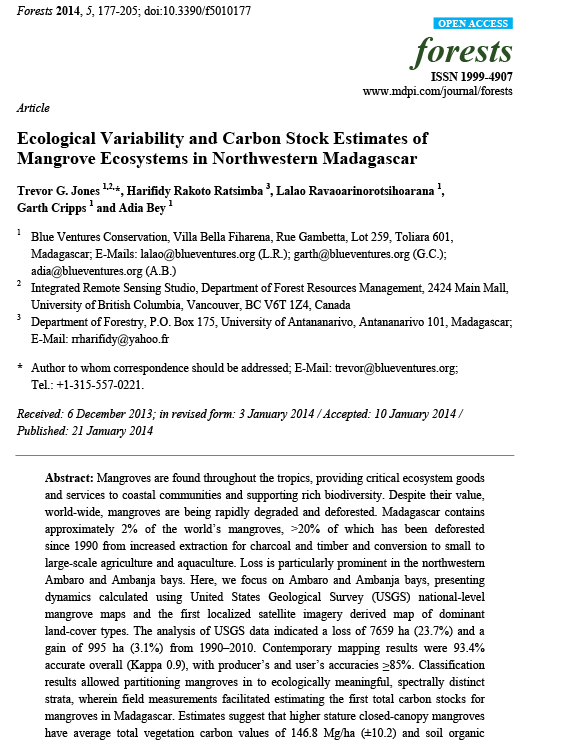Abstract
Mangroves are found throughout the tropics, providing critical ecosystem goods and services to coastal communities and supporting rich biodiversity. Despite their value, world-wide, mangroves are being rapidly degraded and deforested. Madagascar contains approximately 2% of the world’s mangroves, >20% of which has been deforested since 1990 from increased extraction for charcoal and timber and conversion to small to large-scale agriculture and aquaculture. Loss is particularly prominent in the northwestern Ambaro and Ambanja bays.
Here, we focus on Ambaro and Ambanja bays, presenting dynamics calculated using United States Geological Survey (USGS) national-level mangrove maps and the first localized satellite imagery derived map of dominant land-cover types. The analysis of USGS data indicated a loss of 7659 ha (23.7%) and a gain of 995 ha (3.1%) from 1990–2010. Contemporary mapping results were 93.4% accurate overall (Kappa 0.9), with producer’s and user’s accuracies ≥85%. Classification results allowed partitioning mangroves in to ecologically meaningful, spectrally distinct strata, wherein field measurements facilitated estimating the first total carbon stocks for mangroves in Madagascar. Estimates suggest that higher stature closed-canopy mangroves have average total vegetation carbon values of 146.8 Mg/ha (±10.2) and soil organic

















